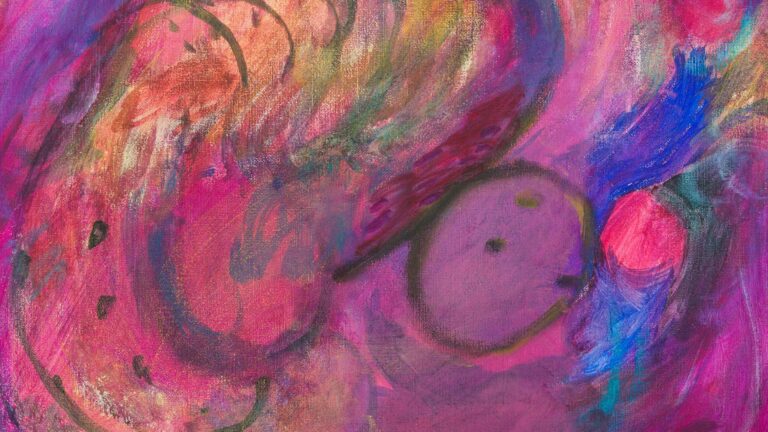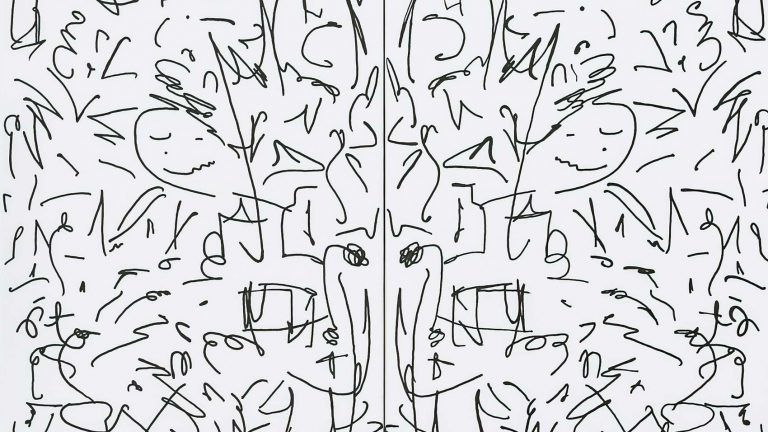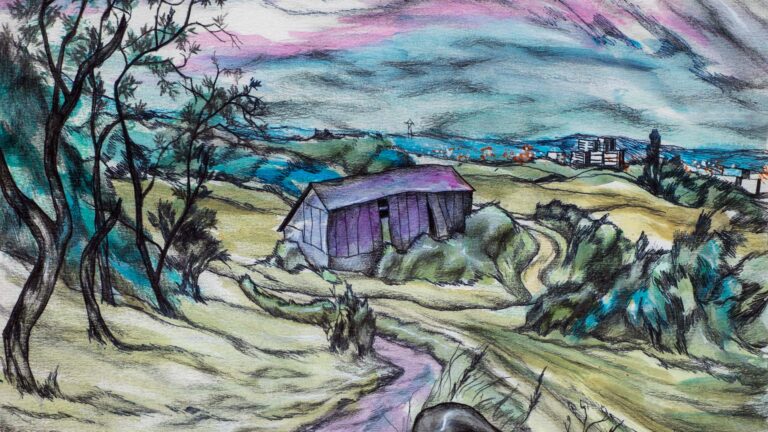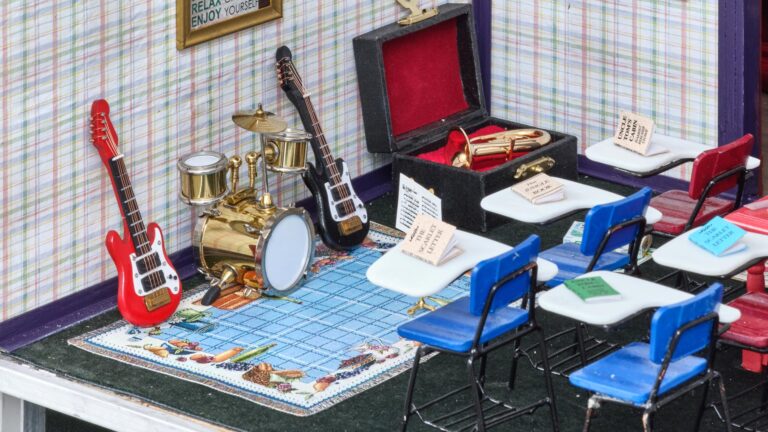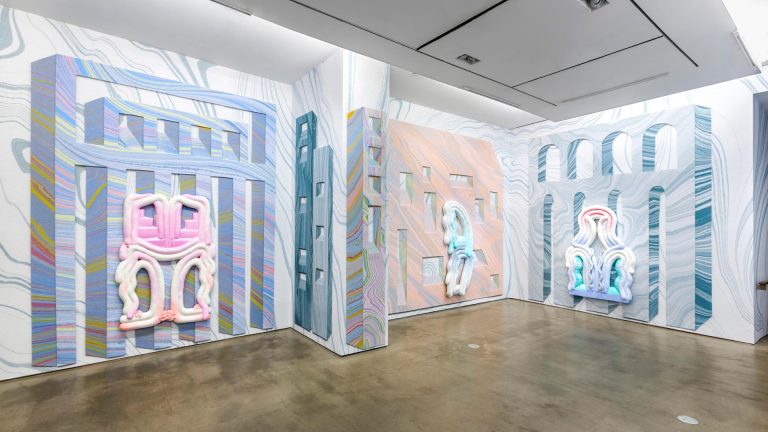Artist: Louise Lawler
Exhibition title: WHY PICTURES NOW
Curated by: Roxana Marcoci, Kelly Sidley
Venue: MoMA, New York, US
Date: April 30 – July 30, 2017
Photography: ©MoMA , all images copyright and courtesy of the artist and MoMA, New York
NEW YORK, April 25, 2017—With Louise Lawler: WHY PICTURES NOW, The Museum of Modern Art presents the first major survey in New York of Louise Lawler (American, b. 1947), spanning the 40-year creative output of one of the most influential artists working in the fields of image production and institutional critique. On view from April 30 to July 30, 2017, in The Joan and Preston Robert Tisch Exhibition Gallery, sixth floor—along with one sound installation, Birdcalls (1972–81), presented in The Abby Aldrich Rockefeller Sculpture Garden—the exhibition takes its title from one of Lawler’s most iconic works, Why Pictures Now (1981), a black-and-white photograph showing a matchbook propped up in an ashtray. Reminiscent of an advertising photograph or a film noir still, it asks the viewer to consider why the work takes the form of a picture, and why the artist is making pictures at this moment. Challenging the traditional museum retrospective and the linear model of artistic progression, the exhibition offers the artist’s response to the present moment. WHY PICTURES NOW is organized by Roxana Marcoci, Senior Curator, with Kelly Sidley, Curatorial Assistant, Department of Photography.
Lawler came of age as part of the Pictures Generation, a loosely knit, highly independent group of artists named for an influential exhibition, Pictures, organized in 1977 by art historian Douglas Crimp at Artists Space in New York. These artists used photography and appropriation-driven strategies to examine the functions and codes of representation. Lawler’s signature style was established in the late 1970s and early 1980s, when she began taking pictures of other artists’ works displayed in collectors’ homes, museums, storage spaces, and auction houses to question the value, meaning, and use of art. Underscoring the collaborative quality of Lawler’s practice, what one sees first in her pictures, both then and now, is works by other artists.
Lawler’s practice offers a sly, witty, and sustained feminist analysis of the strategies that inform art’s production and reception. In 1971, she assisted several artists who were installing work in independent curator Willoughby Sharp’s Pier 18, an exhibition that featured 27 male artists on an abandoned pier on the Hudson River. While walking home after leaving the pier late one evening, Lawler began to mimic birdlike sounds in order to ward off any unwanted interactions, chanting “Willoughby! Willoughby!” This parody evolved into Birdcalls, a seven-minute audio piece in which Lawler strains her voice to squawk, chirp, and twitter the names of celebrated male artists, from Vito Acconci to Lawrence Weiner—a playful, astute critique of the name recognition enjoyed by her male contemporaries. Birdcalls thematizes Lawler’s strategy of resistance to the authoritative and patronymic “proper name.” This work will be played throughout the course of the exhibition in MoMA’s Abby Aldrich Rockefeller Sculpture Garden.
An intriguing aspect of Lawler’s practice is her process of continuously re-presenting, reframing, or restaging her work in the present, a strategy through which the artist revisits her own pictures by transferring them to different formats, from photographs to paperweights, tracings, and works that she calls “adjusted to fit.” The tracings are large-format black-and-white line versions of her photographs that eliminate color and detail, functioning instead as “ghosts” of the originals. “Adjusted to fit” images are stretched or expanded to fit the location of their display, not only suggesting the idea that pictures can have more than one life, but also underpinning the intentional, relational character of Lawler’s farsighted art. Furthermore, in keeping with Lawler’s interest in each picture’s provenance and the institutional creation of values, each label in this exhibition includes the owners of the full edition of that particular work.
Social and political themes interlink throughout Lawler’s work. In 2017, at a moment when the subject of truth and fake news came to the forefront of national discourse, the artist tweaked her “adjusted to fit” images by adding a twisting effect to certain works, further distorting them as a reaction to the concept of “alternative facts.” One of these new works, Pollyanna (adjusted to fit, distorted for the times), features prominently in the MoMA exhibition.
The exhibition consists of a sequence of mural-scale, “adjusted to fit” images set in dynamic relation to nonlinear groupings of photographs distinctive of Lawler’s conceptual exercises. Additionally, a deceptively empty gallery presents black-and-white “tracings” of Lawler’s photographs that have been printed on vinyl and mounted directly on the wall. A display of the artist’s ephemera from the 1970s to today highlights the feminist and performative undercurrents of her art. Lawler’s long history of artistic collaborations, with Andrea Fraser, Felix Gonzalez-Torres, Sherrie Levine, Allan McCollum, Christopher D’Arcangelo, Peter Nadin, and Lawrence Weiner, among others, comes full circle in the ephemera on display.
Furthermore, on the platform outside the gallery space, two “adjusted to fit” images are shown together with Cameron Rowland’s work New York State Unified Court System (2016). Comprised of four oak courtroom benches, it was included in Rowland’s exhibition 91020000, presented at Artists Space in 2016. Lawler and Rowland share an interest in examining the imbalances of exploitative economies, the use value and exchange value of art, the politics of space, and the interplay of power between human relations and larger institutional structures, including markets, museums, prisons, and governments. Additionally, Andrea Fraser will perform her work May I Help You? in the exhibition space. In foregrounding her work’s relationship to the economies of collaboration and exchange, Lawler shifts focus from the individual picture to the broader history of art. Her careful attention to artistic contexts, modes of presentation, and viewers’ receptions generates witty, affective situations that contribute to institutional transformation.
Installation view of Louise Lawler: WHY PICTURES NOW. The Museum of Modern Art, New York, April 30-July 30, 2017. © 2017 The Museum of Modern Art. Photo: Martin Seck
Installation view of Louise Lawler: WHY PICTURES NOW. The Museum of Modern Art, New York, April 30-July 30, 2017. © 2017 The Museum of Modern Art. Photo: Martin Seck
Installation view of Louise Lawler: WHY PICTURES NOW. The Museum of Modern Art, New York, April 30-July 30, 2017. © 2017 The Museum of Modern Art. Photo: Martin Seck
Installation view of Louise Lawler: WHY PICTURES NOW. The Museum of Modern Art, New York, April 30-July 30, 2017. © 2017 The Museum of Modern Art. Photo: Martin Seck
Installation view of Louise Lawler: WHY PICTURES NOW. The Museum of Modern Art, New York, April 30-July 30, 2017. © 2017 The Museum of Modern Art. Photo: Martin Seck
Installation view of Louise Lawler: WHY PICTURES NOW. The Museum of Modern Art, New York, April 30-July 30, 2017. © 2017 The Museum of Modern Art. Photo: Martin Seck
Installation view of Louise Lawler: WHY PICTURES NOW. The Museum of Modern Art, New York, April 30-July 30, 2017. © 2017 The Museum of Modern Art. Photo: Martin Seck
Installation view of Louise Lawler: WHY PICTURES NOW. The Museum of Modern Art, New York, April 30-July 30, 2017. © 2017 The Museum of Modern Art. Photo: Martin Seck
Louise Lawler. Why Pictures Now. 1981. Gelatin silver print, 3 x 6” (7.6 x 15.2 cm). The Museum of Modern Art, New York. Acquired with support from Nathalie and Jean-Daniel Cohen in honor of Roxana Marcoci. © 2017 Louise Lawler
Louise Lawler. Why Pictures Now (traced). 1981/2013. Dimensions variable. Courtesy the artist and Metro Pictures. © 2017 Louise Lawler
Louise Lawler. (Roy Lichtenstein and Other Artists) Black. 1982. Silver dye bleach print, 28 ½ x 37 ¼” (72.4 x 94.6 cm). Courtesy the artist and Metro Pictures. © 2017 Louise Lawler
Louise Lawler. (Andy Warhol and Other Artists) Tulip. 1982. Silver dye bleach print, 38 ½ x 60 ½” (97.8 x 153.7 cm). Courtesy the artist and Metro Pictures. © 2017 Louise Lawler
Louise Lawler. Does Andy Warhol Make You Cry? 1988. Silver dye bleach print with text on Plexiglass wall label, Image (shown): 27 ¼ x 39” (69.2 x 99.1 cm); Label: 4 3/8 x 6 3/8 in. (11.1 x 16.2 cm). The Museum of Modern Art, New York. Gift of Gabriella de Ferrari in honor of Karen Davidson. © 2017 Louise Lawler
Louise Lawler. Sentimental. 1999/2000. Silver dye bleach print, 40 ¾ x 46 ¾” (103.5 x 118.7 cm). The Museum of Modern Art, New York. Promised gift of Glenn and Amanda Fuhrman. © 2017 Louise Lawler
Louise Lawler. Life After 1945 (Faces ). 2006/2007. Silver dye bleach print, 40 x 33 ¼” (101.6 x 84.5 cm). The Museum of Modern Art, New York. Promised gift of Glenn and Amanda Fuhrman. © 2017 Louise Lawler
Louise Lawler. Evening Sale. 2010/2015. Silver dye bleach print, 50 x 36 5/8” (127 x 93 cm). Courtesy the artist and Metro Pictures. © 2017 Louise Lawler
Louise Lawler. Produced in 1988, Purchased in 1989; Produced in 1989, Purchased in 1993 (adjusted to fit). 1995/2010. Dimensions variable. Courtesy the artist and Metro Pictures. © 2017 Louise Lawler. ** Note on reproducing Lawler’s ‘Adjusted to Fit’ works: Each time these images are reproduced, they should be stretched to the space given to the reproduction. The original file (un-stretched) is the origin point for anything that is then adjusted by the photo editor.
Louise Lawler. No Drones. 2010/2011. Chromogenic color print, 29 ¼ x 19 ¾” (74.3 x 50.2 cm). Courtesy the artist and Metro Pictures. © 2017 Louise Lawler
Louise Lawler. Triangle (adjusted to fit). 2008/2009/2011. Dimensions variable. Courtesy the artist and Metro Pictures. © 2017 Louise Lawler. ** Note on reproducing Lawler’s ‘Adjusted to Fit’ works: Each time these images are reproduced, they should be stretched to the space given to the reproduction. The original file (un-stretched) is the origin point for anything that is then adjusted by the photo editor.
Louise Lawler. Pollyanna (adjusted to fit). 2007/2008/2012. Dimensions variable. Courtesy the artist and Metro Pictures. © 2017 Louise Lawler. ** Note on reproducing Lawler’s ‘Adjusted to Fit’ works: Each time these images are reproduced, they should be stretched to the space given to the reproduction. The original file (un-stretched) is the origin point for anything that is then adjusted by the photo editor.
Louise Lawler. Pollock and Tureen (traced). 1984/2013. Dimensions variable. The Museum of Modern Art, New York. The Abby Aldrich Rockefeller Endowment for Prints © 2017 Louise Lawler
Louise Lawler. Salon Hodler (traced). 1992/1993/2013. Dimensions variable. Courtesy the artist and Metro Pictures. © 2017 Louise Lawler
Louise Lawler. Hand on Her Back (traced). 1997/1998/2013. Dimensions variable. Courtesy the artist and Metro Pictures. © 2017 Louise Lawler
Louise Lawler. Marie +270. 2010/2012. Chromogenic color print, 59 x 45 ½” (149.9 x 115.6 cm). The Museum of Modern Art, New York. Promised gift of Ricki Gail Conway. © 2017 Louise Lawler
Louise Lawler. Big (adjusted to fit). 2002/2003/2016.Dimensions variable. The Museum of Modern Art, New York. Acquired through the generosity of The Modern Women’s Fund and The Contemporary Arts Council. © 2017 Louise Lawler. ** Note on reproducing Lawler’s ‘Adjusted to Fit’ works: Each time these images are reproduced, they should be stretched to the space given to the reproduction. The original file (un-stretched) is the origin point for anything that is then adjusted by the photo editor.
Louise Lawler. Still Life (Candle) (adjusted to fit). 2003/2016. Dimensions variable. Courtesy the artist and Metro Pictures. © 2017 Louise Lawler. ** Note on reproducing Lawler’s ‘Adjusted to Fit’ works: Each time these images are reproduced, they should be stretched to the space given to the reproduction. The original file (un-stretched) is the origin point for anything that is then adjusted by the photo editor.
Louise Lawler. Arranged by Donald Marron, Susan Brundage, Cheryl Bishop at Paine Webber Inc. (adjusted to fit). 1982/2016. Dimensions variable. Courtesy the artist and Metro Pictures. © 2017 Louise Lawler. ** Note on reproducing Lawler’s ‘Adjusted to Fit’ works: Each time these images are reproduced, they should be stretched to the space given to the reproduction. The original file (un-stretched) is the origin point for anything that is then adjusted by the photo editor.
Louise Lawler. Big (adjusted to fit), distorted for the times. 2002/2003/2016. Dimensions variable. Courtesy the artist and Metro Pictures. © 2017 Louise Lawler. ** Note on reproducing Lawler’s ‘Adjusted to Fit’ works: Each time these images are reproduced, they should be stretched to the space given to the reproduction. The original file (un-stretched) is the origin point for anything that is then adjusted by the photo editor.
Louise Lawler. Life After 1945 (Faces) (adjusted to fit), distorted for the times. 2006/2007/2015. Dimensions variable. Courtesy the artist and Metro Pictures. © 2017 Louise Lawler. ** Note on reproducing Lawler’s ‘Adjusted to Fit’ works: Each time these images are reproduced, they should be stretched to the space given to the reproduction. The original file (un-stretched) is the origin point for anything that is then adjusted by the photo editor.
Louise Lawler. Pollyanna (adjusted to fit), distorted for the times. 2007/2008/2012. Dimensions variable. Courtesy the artist and Metro Pictures. © 2017 Louise Lawler. ** Note on reproducing Lawler’s ‘Adjusted to Fit’ works: Each time these images are reproduced, they should be stretched to the space given to the reproduction. The original file (un-stretched) is the origin point for anything that is then adjusted by the photo editor.
Louise Lawler. Produced in 1988, Purchased in 1989; Produced in 1989, Purchased in 1993 (adjusted to fit), distorted for the times. 1995/2010. Dimensions variable. Courtesy the artist and Metro Pictures. © 2017 Louise Lawler. ** Note on reproducing Lawler’s ‘Adjusted to Fit’ works: Each time these images are reproduced, they should be stretched to the space given to the reproduction. The original file (un-stretched) is the origin point for anything that is then adjusted by the photo editor.
Louise Lawler. Still Life (Candle) (adjusted to fit), distorted for the times. 2003/2016. Dimensions variable. Courtesy the artist and Metro Pictures. © 2017 Louise Lawler. ** Note on reproducing Lawler’s ‘Adjusted to Fit’ works: Each time these images are reproduced, they should be stretched to the space given to the reproduction. The original file (un-stretched) is the origin point for anything that is then adjusted by the photo editor.


































